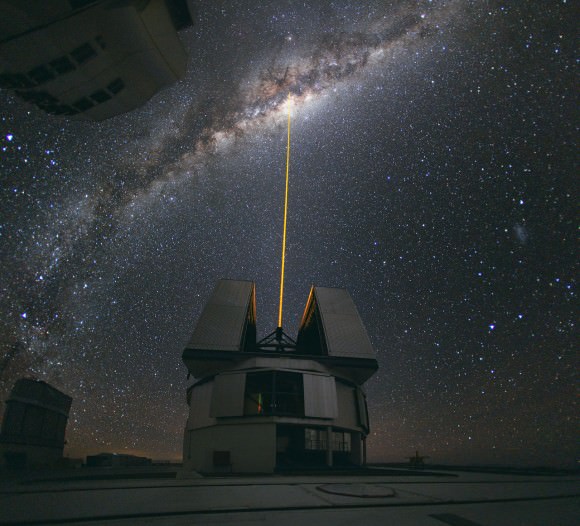Did you know you can distinguish between stars and planets in the sky?
Stars twinkle, planets don’t.
Okay, that’s not actually correct. The stars, planets, even the Sun and Moon twinkle, all in varying amounts. Anything outside the atmosphere is going to twinkle.
If you’re feeling a little silly using the word twinkle over and over again, we can also use the scientific term: astronomical scintillation.
You can’t feel it, but you’re carrying the entire weight of the atmosphere on your shoulders. Every single square inch of your skin is getting pushed by 15 pounds of pressure. And even though astronomers need our atmosphere to survive, it still drives them crazy. As it makes objects in space so much harder to see.
Stars twinkle, I mean scintillate, because as light passes down through a volume of air, turbulence in the Earth’s atmosphere refracts light differently from moment to moment. From our perspective, the light from a star will appear in one location, then milliseconds later, it’ll be distorted to a different spot.
We see this as twinkling.
So why do stars appear to twinkle, while planets don’t?
Stars appear as a single point in the sky, because of the great distance between us and them. This single point can be highly affected by atmospheric turbulence. Planets, being much closer, appear as disks.
We can’t resolve them as disks with our eyes, but it still averages out as a more stable light in the sky.
Astronomers battle atmospheric turbulence in two ways:
First, they try to get above it. The Hubble Space Telescope is powerful because it’s outside the atmosphere. The mirror is actually a quarter the size of a large ground-based observatory, but without atmospheric distortion, Hubble can resolve galaxies billions of light-years away. The longer it looks, the more light it gathers.
Second, they try to compensate for it.
Some of the most sophisticated telescopes on Earth use adaptive optics, which distorts the mirror of the telescope many times a second to compensate for the turbulence in the atmosphere.

Now you know why stars twinkle, why planets don’t seem to twinkle as much, and how you can make all of them stop.
We have written many articles about stars here on Universe Today. Here’s an article that talks about a technique astronomers use to minimize the twinkle of the Earth’s atmosphere.
If you’d like more information on stars, check out Hubblesite’s News Releases about Stars, and here’s the stars and galaxies homepage.
We have recorded several episodes of Astronomy Cast about stars. Here are two that you might find helpful: Episode 12: Where Do Baby Stars Come From, and Episode 13: Where Do Stars Go When they Die?

